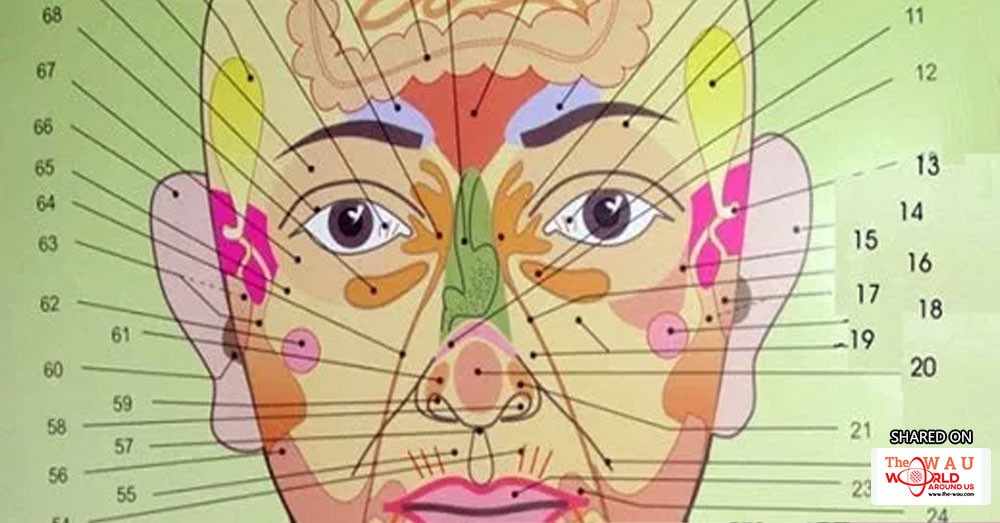Do you believe in ancient techniques of diagnosis and treatment? Most if not everybody people depend on modern medical advices. But the question is how our forefathers survived without todays modern medical advices?
The alternative medicine (the original medicine) takes a big part in the modern medicine. Through the history people in all regions used different techniques of treatment – herbalism, yoga, Ayurveda, acupuncture and many other. We can diagnose a lot of issues that can occur in our body with alternative medicine. They are safe and a great way of monitoring our entire body.
One of the methods comes from the Russian Healer. It is about using the location of acne on our face for diagnosing. See yourself in the mirror, and look where you have acne. Then study this picture and analyze if there is a problem in this part of the body. Here are points with the explanation.
1. Rectum; 2. Sigmoid colon; 3. Liver; 4. Hoses; 5. Descending part of the colon; 6. Left adrenal gland; 7. Pelvic left kidney; 8. The upper part of the left kidney; 9. Left lobe of the liver; 10. The gallbladder (corpus vesicae felleae); 11. Left part of the cross-colon; 12. Pancreas; 13. Bile and hepatic ducts; 14. Left kidney; 15. Heart pathology; 16. Urethra of left kidney; 17. Left lobe of the liver; 18. Left milk (lactiferous) gland; 19. Left lung; 20. Cardiac disorders; 21. Bronchi in left lung; 22. Diaphragm, rib layer; 23. Lesser curvature; 24. Duodenum; 25. Left adrenal gland; 26. Left inguinal crease; 27. Left ovary in women, the left testicle for men; 28. Left milk (lactiferous) gland; 29. Sacroiliac joint; 30. Left kidney; 31. Big curvature of the stomach; 32. Left pendant uterus with the ovaries, the left lobe of the prostate in the testis; 33. Bladder; 34. Pelvic left kidney; 35. Pancreas; 36. Left lobe of the thyroid; 37. Left urethra; 38.Pyloric part of the stomach; 39. Uterus, lobes of the prostate, perineum; 40. Right milk (lactiferous) gland; 41. Pyloric part of the stomach; 42. Right urethra; 43. Gall bladder; 44. The right lobe of thyroid; 45. The pelvis of the kidney; 46. Right pendant uterus with the ovaries, the right lobe of the prostate in the testis; 47. A small curvature of the stomach; 48. Right kidney; 49. Right ovary of women, the right testicle of men; 50. Iliac lymph system; 51. Right adrenal gland; 52. Hose; 53. Big curvature of the stomach; 54. Hormonal system; 55. Signs of scleroderma; 56. Hose; 57. Saber cartilage; 58. A small curvature of the stomach; 59. Big curvature of the stomach; 60. Right urethra; 61. Bronchi in right lung; 62. Right milk (lactiferous) gland; 63. The right lobe of the liver; 64. Right urethra; 65. The right lung; 66. Right kidney; 67. Signs of stagnation in the kidneys, kidney stones, kidney sand; 68. The right part of the cross-colon; 69. Infection of the kidney; 70. Right kidney; 71. The body of the gallbladder with excretory ducts; 72. The right lobe of the liver; 73. The pelvis of the kidney; 74. Right adrenal gland; 75. A growing part of the colon (the ileocecal angle); 76. The transverse colon; 77. Appendix; 78. Stomach; 79. Bladder; 80. Genitals.
Share This Post
















